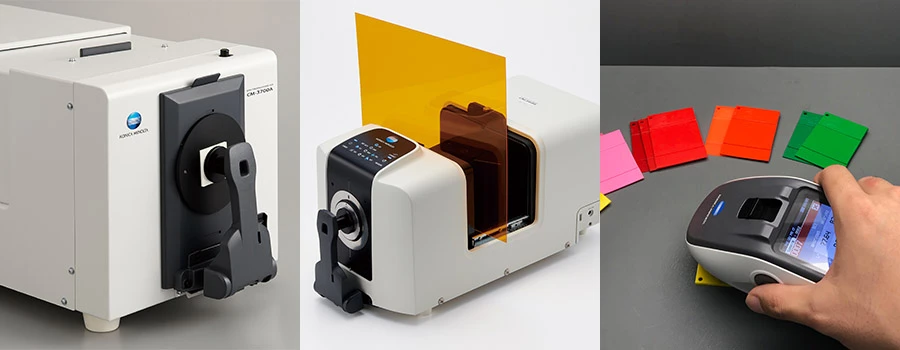Digital Color Measurement and Management Made Easy

The color and appearance of a product are a significant part of its aesthetic appeal and can also impact its perceived quality. As globalization of manufacturing processes rapidly expands, so do the challenges faced by manufacturers when trying to maintain the quality of their products throughout the supply chain across different locations. One of the challenges facing today’s manufacturers working with a globalized supply chain is communicating and ensuring color specifications accurately and consistently, especially since the manufacturing process involves multiple factories across different locations. Not to mention, people don’t always see color in the same way; our individual eyes perceive color differently. So, relying very much on our eyes alone to evaluate colors is subjective and can be affected by various effects like metamerism.
Digital Color Management
Digital color management offers objectivity to the color assessment and quality control process. Digital color management is a process of numerically measuring the color of an object, often referred to as a target color, and then creating a corresponding digital representation of that color. The goal of this process is to create a more accurate and consistent way to capture, store, and communicate colors digitally across the supply chain in seconds while reducing miscommunication and minimizing costly color mistakes. In addition, digital color management reduces the need to prepare and deploy physical samples across the supply chain, saving resources, time, and money. Preparation and deployment of physical samples across the supply chain can be slow and costly. But by communicating color digitally, the turnaround time can be greatly reduced. And if adjustment or rectification is required, it can be achieved quickly with minimal back-and-forth.
Effective and efficient digital color management starts with having a well-defined color measurement methodology and sharing it across the supply chain along with the colorimetric data. An example of a color measurement methodology includes defining the color measurement instrument’s model, the measurement geometry, the standard illuminant and observer, the color space and tolerance, and how the sample is prepared and presented for measurement. There are many different types of color measurement instruments, and their measurement results may not be comparable even when the color is identical. For accurate and consistent results, it is recommended that all parties within the supply chain use color measurement instruments of the same make and model. And more importantly, the color measurement instrument chosen should have a good inter-instrument agreement (IIA). IIA expresses how close color measurement instruments of the same make and model measure the same color. The better the IIA, the closer their measurement results will be to one another.
Konica Minolta Digital Color Management Solutions
Digital color measurement and management are made easy with Konica Minolta. For hardware, Konica Minolta offers various close tolerance color measurement instruments, from benchtop models like Spectrophotometer CM-3700A and Spectrophotometer CM-36dG to portable models like Spectrophotometer CM-26dG, with excellent IIA that are suitable for digital color management. Aside from color, both the CM-36dG and CM-26dG also come with an integrated gloss sensor that enables simultaneous color and gloss measurement. Check out the CM-36dG and CM-26dG videos to learn more about their capabilities.

Spectrophotometer CM-3700A (left), Spectrophotometer CM-36dG (center), and Spectrophotometer CM-26dG (right)
Alongside the color measurement instruments, Konica Minolta also offers the SpectraMagic NX (SMNX) software that allows users to manage and share their color data across the global supply chain network effortlessly. The SMNX comes with numerous pre-defined templates (screen layout and report) that users can use to manage and present their color data. Users can also create their template, where they can add objects like graphs (e.g., color and spectral), measurement illustration images, etc., to better suit their requirements.
Need help setting up your digital color management system or perhaps require assistance finding the right color measurement instruments or solutions for your applications? Contact our color specialists for a free consultation now.
